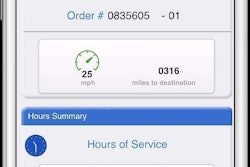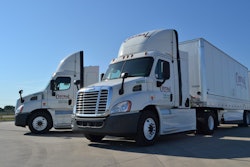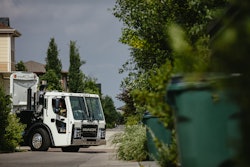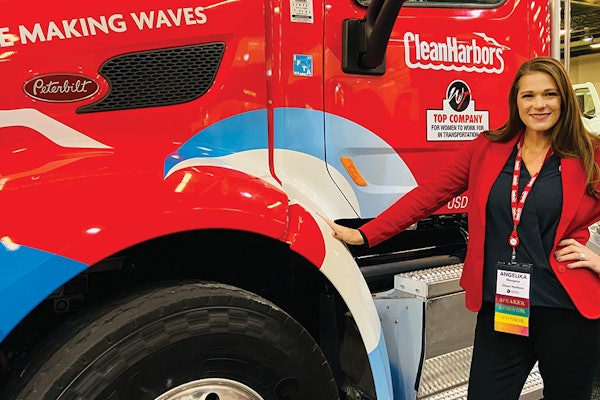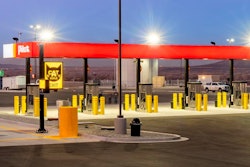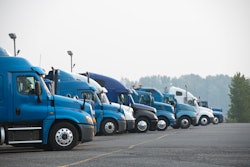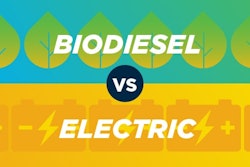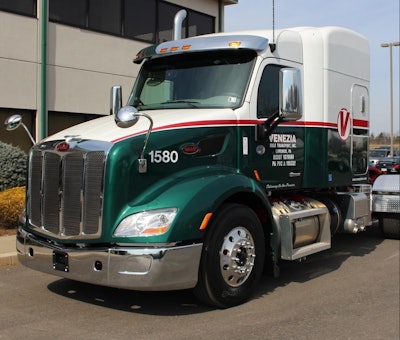 Venezia Bulk Transport plans to use a mobile driver app to capture documents needed to complete payroll and billing.
Venezia Bulk Transport plans to use a mobile driver app to capture documents needed to complete payroll and billing.The volume of data that can be captured by mobile technologies such as ELDs and fleet tracking systems seldom leave carriers trying to fill in gaps in a driver’s workday to calculate payroll. On the contrary, having so much activity detail makes it possible to create new compensation packages for drivers and automate all of the administrative work.
Part one of this Automating Driver Pay series looked at the impact of California labor laws and how one carrier uses technology to simplify an activity-based pay scheme. Continuing with part two, we look at new mobile technology that is speeding the flow of information and documents from drivers to assist with automating payroll.
Electronic POD
Centurion Auto Transport continues to invest in technology that gives its customers an Amazon-like shipping experience, explains Claudia Land, training and compliance manager for the Jacksonville, Fla.-based fleet.
“We’re close. We’re not quite there, but we are very, very close,” she says.
Like Amazon, Centurion automatically notifies its dealer customers when their vehicle shipments are picked up and gives a scheduled delivery date. Upon delivery, drivers use its technology to capture an electronic proof-of-delivery (POD), which makes it possible to invoice the customers and pay drivers without delay.
The electronic POD process started in 2006, or at least the thought did, Land says. At the time Centurion was using a mobile application from Airclic on Nextel phones. Drivers scanned the VIN numbers of the vehicles they picked up at ports.
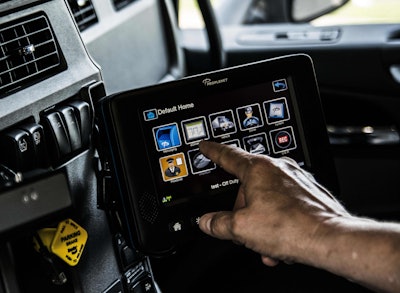 Centurion Auto Transport uses the Tablet from PeopleNet to capture electronic proof-of-delivery receipts, but plans to use the new Android platform starting in July.
Centurion Auto Transport uses the Tablet from PeopleNet to capture electronic proof-of-delivery receipts, but plans to use the new Android platform starting in July.In 2007, Centurion took the next step to an electronic POD process by installing a mobile platform from PeopleNet. A few years later it took another step by swapping its dash-mounted driver displays with new Windows Tablet devices from PeopleNet and engaged the vendor’s Tailored Solutions group to develop a custom workflow for its auto hauling business.
With the workflow, drivers receive load assignments and scan-in vehicles at pickup. The scan triggers an automatic notice to customers for the scheduled delivery date.
Upon completing a delivery, drivers capture an electronic signature from the customer on the Tablet.
In early 2017 the company installed the TMW.Suite platform by TMW Systems to replace its legacy Unix-based fleet management system. The integrated workflow from PeopleNet and TMW has made it possible to invoice customers on the same day as delivery, she says.
“That is something that auto haulers have never been able to do,” she says. “We’ve always had to wait for the driver to return with paper bills of lading to provide a proof of delivery.”
Currently, the company is testing the new Android tablet for PeopleNet’s ConnectedFleet platform with plans to begin deployment across its 255-truck fleet in July.
“The pairing of PeopleNet and TMW has significantly positioned us for automation of driver pay,” she says. “In the near future, managing driver settlement sheets will be completed electronically through our imaging solution, Synergize. This process will produce significant gains by further reducing paper, decreasing empty miles, and increasing the overall drive time.”
Using the Android tablets opens new possibilities to host safety meetings online, she says, and to implement a driver scorecard. Drivers will be able to view their weekly performance for mileage, on-time service and other areas along with getting rewards. All of the communication for the scorecard will take place automatically between TMW and PeopleNet.
“No one will be pounding away on spreadsheets,” she says.
Mobile driver apps
Mobile driver apps are one way to clear a path towards automated driver pay. The technology is helping fleets and drivers accelerate the flow of proof-of-delivery (POD) receipts and other trip documents to the office to complete billing and payroll.
Fleets with over-the-road operations have traditionally paid for drivers to use overnight mail and truck stop scanning services. New mobile driver apps have features to capture pictures of PODs, toll receipts and other trip documents and index these images to loads.
Venezia Bulk Transport, a 500-truck carrier based in Limerick, Penn., is currently vetting different mobile app vendors, says Frank Venezia, director of operations. The company is using an overnight drop-box mail service, which does not always guarantee that documents will arrive on time.
Drivers will be able to get trip documents to the office instantly to “prevent some frustration,” he says, by meeting the payroll deadline.
Another feature he plans to include in a mobile driver app will allow drivers to view their live payroll information to know what trips will be included in the next check, he says.
The mobile app will integrate with the back-office software system that Venezia Bulk Transport uses, TMW.Suite from TMW Systems, which automatically calculates the mileages and tracks the loading, unloading and detention events for driver pay.
One of the remaining steps that Venezia would like to automate is to capture arrival and departure events at shipping and receiving locations. Currently, its drivers capture these events by pushing “macro” keys on its onboard communications system.
For more information about new developments in mobile driver apps, see this recent article on the topic. Also, Covenant Transport will be presenting on how they use mobile technology to engage drivers during a free CCJ Webinar on Thursday, May 11, at 10 AM Central. Click here to register.

